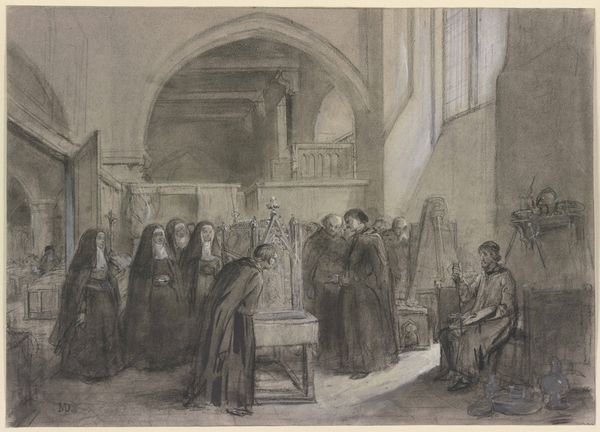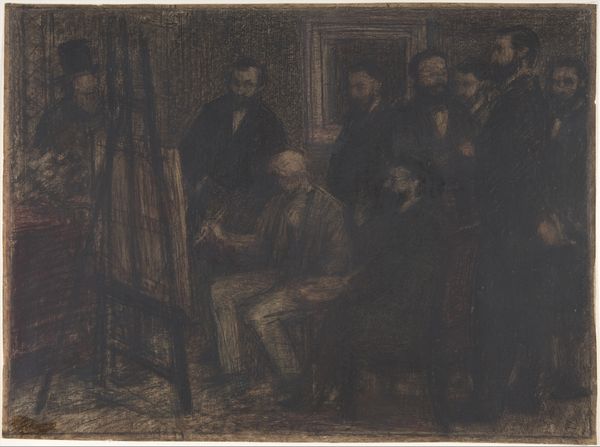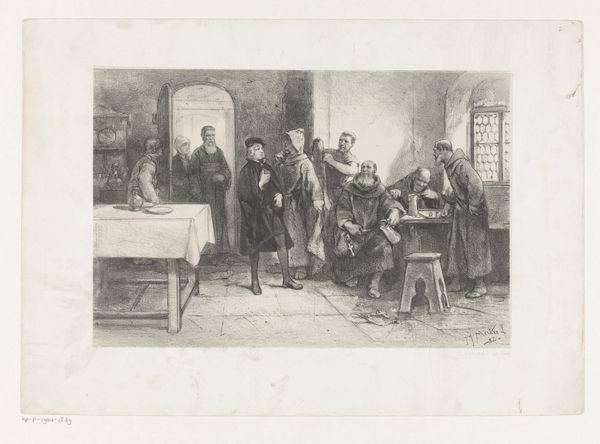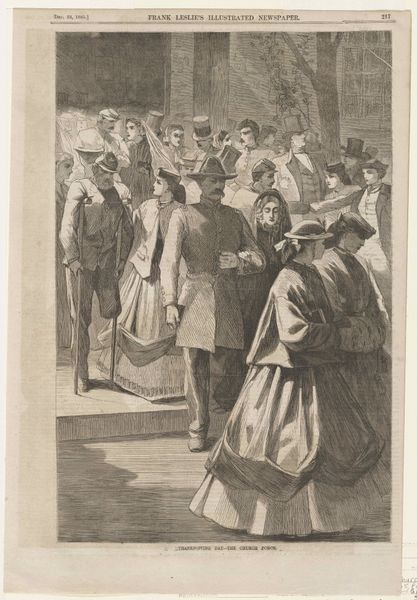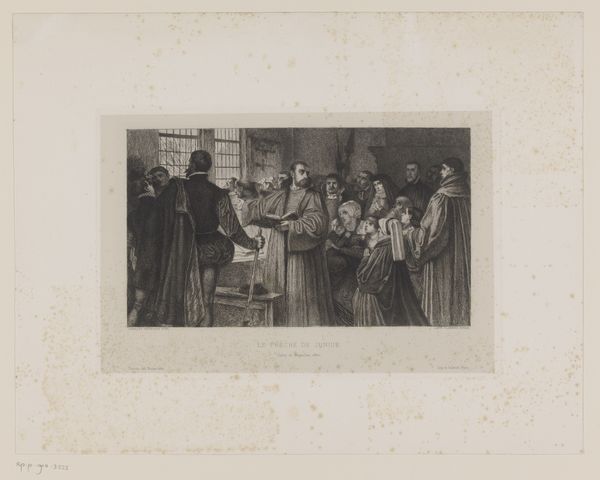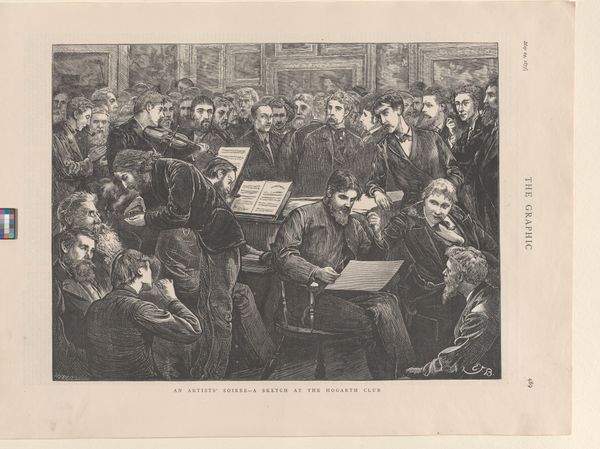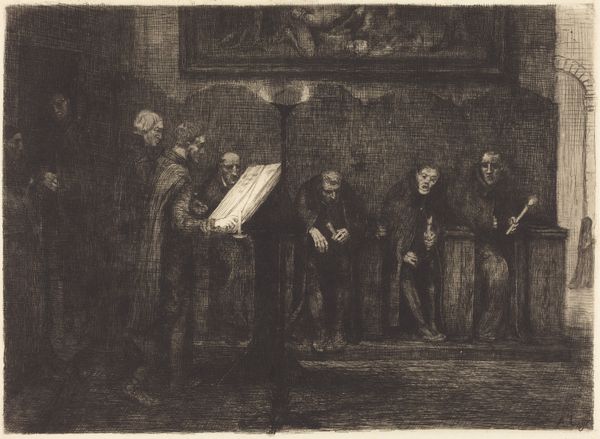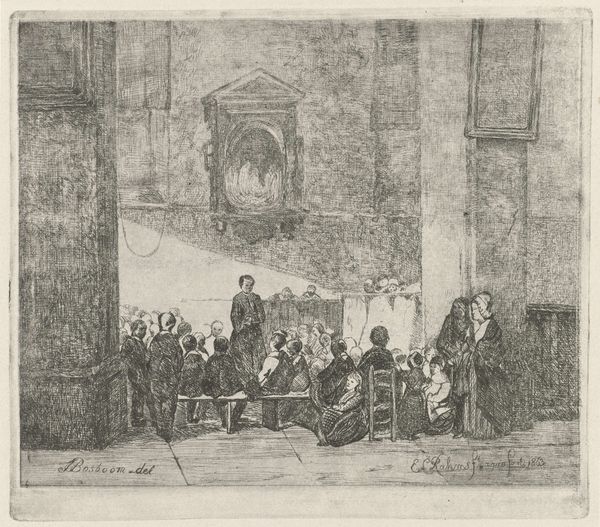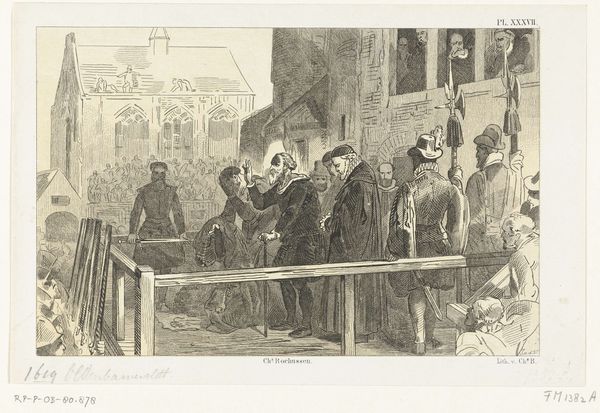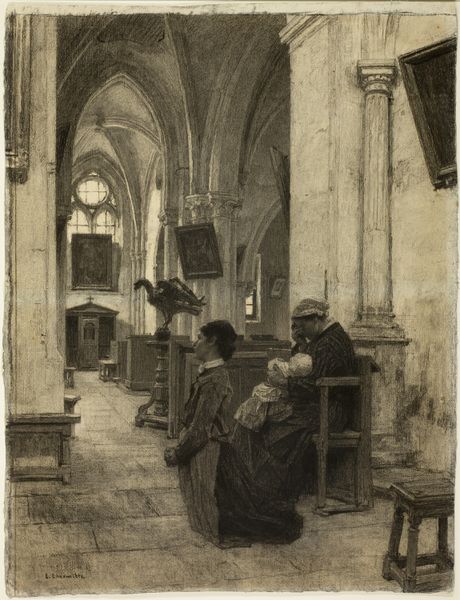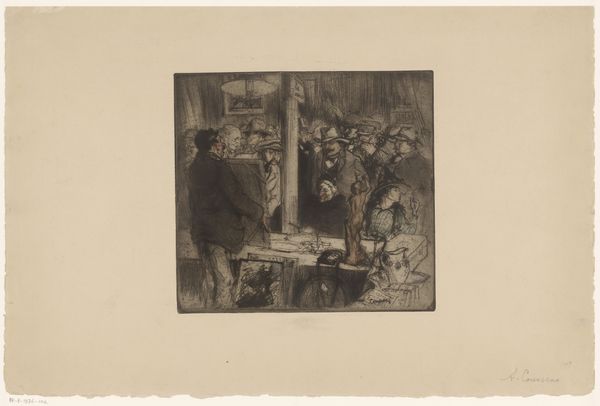
drawing, charcoal
#
drawing
#
charcoal drawing
#
genre-painting
#
charcoal
#
academic-art
#
realism
Dimensions: 11 3/4 × 18 7/8 in. (29.8 × 47.9 cm)
Copyright: Public Domain
Léon Augustin Lhermitte created this drawing of the Feast of the Company of Archers using charcoal and white chalk. Inside the church, the priest’s open gesture of blessing carries echoes of ancient orators, symbolizing benediction and authority. This gesture, which is reminiscent of classical depictions of emperors addressing their legions, transcends the ages. It is a primal signal, wired into our collective memory, signifying leadership and divine approval. In this feast of the company of archers, it highlights a convergence of military prowess and spiritual sanction, embedding the ceremony within a deep cultural narrative. Consider how the open hand, a sign of generosity and power, recurs in countless artistic contexts—from the raised hands of prayer in religious iconography to the commanding gestures of rulers in state portraits. This non-linear, cyclical recurrence of symbols highlights how images evolve, adapting to new contexts while still evoking ancient emotional responses.
Comments
minneapolisinstituteofart almost 2 years ago
⋮
The local Company of Archers has assembled in the parish church to receive a blessing from the priest. Several of the men standing at the upper left are holding longbows. Companies or guilds of Archers were formed in the Middle Ages as a communal form of self protection. By 1872, such guilds had outlived their original purpose, but they remained as fraternal organizations steeped in tradition and communal pride. Léon Lhermitte made the drawing in the village of Beauvardes, about 60 miles from Paris and less than a two hour walk from his home town of Mont-Saint-Père. With the possible exception of the altar boys, everyone in the church seems warmly dressed. No wonder, because the date is probably January 20, the feast day of Saint Sebastian, whose martyrdom involved being shot through with arrows and who went on to serve as the patron saint of Archers' guilds. A sculpture of Saint Sebastion appears beneath the window at the upper left. Though the scene is quite convincing, we should be cautious of taking it too literally, for, at least in part, Lhermitte staged it, casting his father, Jaques Lhermitte, and his uncle (and future father-in-law) Goudard in the roles of the two cantors.
Join the conversation
Join millions of artists and users on Artera today and experience the ultimate creative platform.

